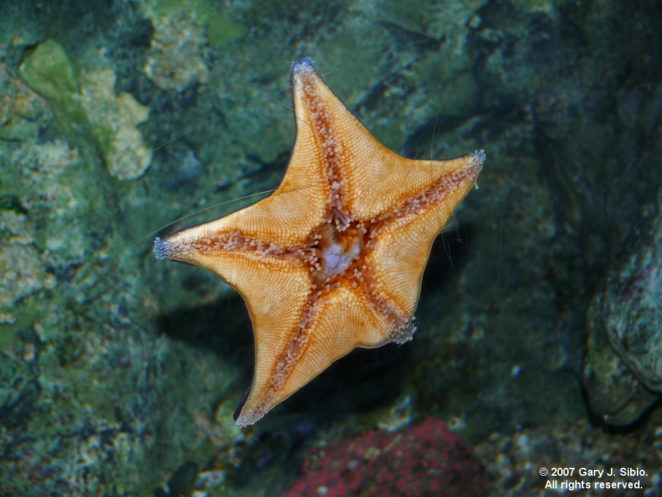Starfish 2 (2007-09-03 11-20-11a)
Their “feet” are the little tube-like structures on the underside of their arms. They use them to move along the sea floor looking for other invertebrates to eat. Their mouths are located on the underside of the hub. When they eat they turn their stomachs inside out through the mouth.
Starfish do not have well-defined sensory organs. Despite this they are sensitive to touch, light, temperature, orientation and the water conditions around them. Their tube feet (the ones under the arms), their spines and pedicellariae (small structures thought to keep the starfish clean of algae) are sensitive to touch.
Starfish have no brains but they do have a complex nervous system consisting of a ring of nerves around the mouth and nerves running out each of their arms. There is an eye-spot at the end of each arm but they don’t see as we do. Their circulatory system consists of a heart which beats about six times a minute and three sets of blood vessels which form a ring around the mouth, the digestive system of the genitals.
Starfish have separate male and female individuals but they can’t be distinguished when they are not mating. Some are hermaphroditic. One species, Asterina gibbosa, starts off life as a male but changes into a female as it ages. A few species fertilize the eggs internally but the vast majority do so externally.


